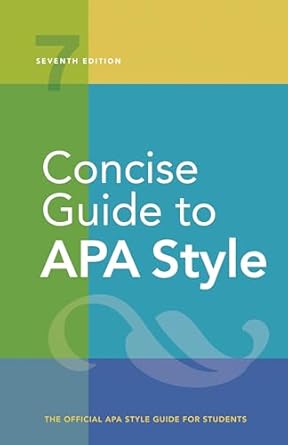[toc]
title page elements a comprehensive guide
Concise Guide to APA Style: 7th Edition (OFFICIAL)
Page 31 Review
Analyzing the Core Elements of Academic Paper Title Pages: A Detailed Commentary
Crafting a well-structured academic paper involves meticulous attention to detail, especially in the initial pages.
The title page serves as the gateway to your research, providing crucial information to the reader.
This analysis focuses on the essential elements of a title page, as outlined in the provided excerpt, ensuring compliance with academic standards.
Essential Elements of a Title Page
The excerpt highlights several key components that should be included on the title page of an academic paper.
These elements provide context and attribution, guiding the reader through the paper’s origins and purpose.
According to the text:
“Students should follow the guidelines of their instructor or institution when determining what elements to include on the title page and how to format them.
If not instructed otherwise, students should include the following elements on the title page (see Figure 1.2):”
This emphasizes the importance of adhering to specific instructions provided by the instructor or institution.
However, in the absence of such guidance, the following elements should be included:
- Title of the Paper: “title of the paper (see Section 1.7);”
- Author Byline: “name of each author of the paper (the byline; see Section 1.8 for formatting the byline);”
- Author Affiliation: “affiliation for each author, typically the university attended (includ- ing the name of any department or division; see Section 1.9);”
- Course Information: “course number and name for which the paper is being submitted (use the format shown on institutional materials; e.g., PSY204, PSYC 4301, NURS 303);”
- Instructor’s Name: “instructor name (check with the instructor for the preferred form; e.g., Dr.
Hiilya F.
Akis; Professor Levin; Kwame Osei, PhD; Mariam Sherzai, RN);”
- Due Date: “assignment due date, written in the month, date, and year format used in your country (usually November 4, 2020, or 4 November 2020; we recommend spelling out the month, although 2020-11-04 is the format in countries that use the international standard date);”
- Page Number: “page number in the header (also included on all pages; see Section 1.17).”
These elements collectively provide a comprehensive overview of the paper’s origins and academic context.
Failure to include these details can result in a paper that lacks credibility and may be viewed as unprofessional.
Formatting Guidelines for Title Page Elements
Beyond just including the necessary elements, the excerpt also provides guidance on how to format them correctly:
“See the sections for the title, byline, affiliation, and page numbers for formatting instructions for these elements.
Place the course number and name, instructor name, and assignment due date on separate lines on the title page, centered and in that order, starting one line below the affiliation (see Section 1.20 for more on line spacing).
Do not add extra lines between these elements.”
This highlights the importance of consulting specific sections within the style guide for detailed formatting instructions for the title, byline, affiliation, and page numbers.
Furthermore, the course number, course name, instructor’s name, and assignment due date should be placed on separate, centered lines, starting directly below the affiliation.
The instruction to “Do not add extra lines between these elements” underscores the need for precise and consistent formatting.
Crafting an Effective Title
The title is arguably the most important element on the title page.
It serves as the first point of contact between the reader and the research.
The excerpt offers valuable insights into creating an effective title:
“The title should summarize the main idea of your paper simply and, if possible, in a way that is engaging for readers.
For research papers, it should be a concise statement of the main topic of the research and identify the variables or theoretical issues under investigation and the relationship between them.”
This stresses the need for clarity and conciseness.
A good title should encapsulate the essence of the paper and, if possible, pique the reader’s interest.
For research papers, the title should clearly state the research topic, identify the variables or theoretical issues being explored, and indicate the relationship between them.
Title Length and Essential Terms
While there is no prescribed length limit, the excerpt advises on maintaining focus and brevity:
“Although there is no prescribed limit for title length in APA Style, keep your titles focused and succinct.
Include essential terms in the title that clarify the topic of your paper for readers.”
This emphasizes the importance of avoiding overly verbose titles.
Keeping the title focused and succinct ensures that the main topic remains clear.
Including essential terms that clarify the topic is crucial for helping readers quickly understand the paper’s subject matter.
Conclusion
In conclusion, a well-constructed title page is an essential component of any academic paper.
By following the guidelines outlined in the excerpt, students can ensure that their papers adhere to academic standards, providing readers with the necessary information to understand the paper’s context, attribution, and purpose.
Attention to detail in formatting and title construction is crucial for presenting a professional and credible piece of academic work.
Buy full ebook for only $18: https://www.lulu.com/shop/american-psychological-association/concise-guide-to-apa-style-7th-edition-official/ebook/product-rmzpq54.html?page=1&pageSize=4
Title Page Elements A Comprehensive Guide
Read more: Analyzing Experimental Stimuli: A Book Review</
Read more: Inclusive Language Guide for Psychological Writing</


Leave a Reply